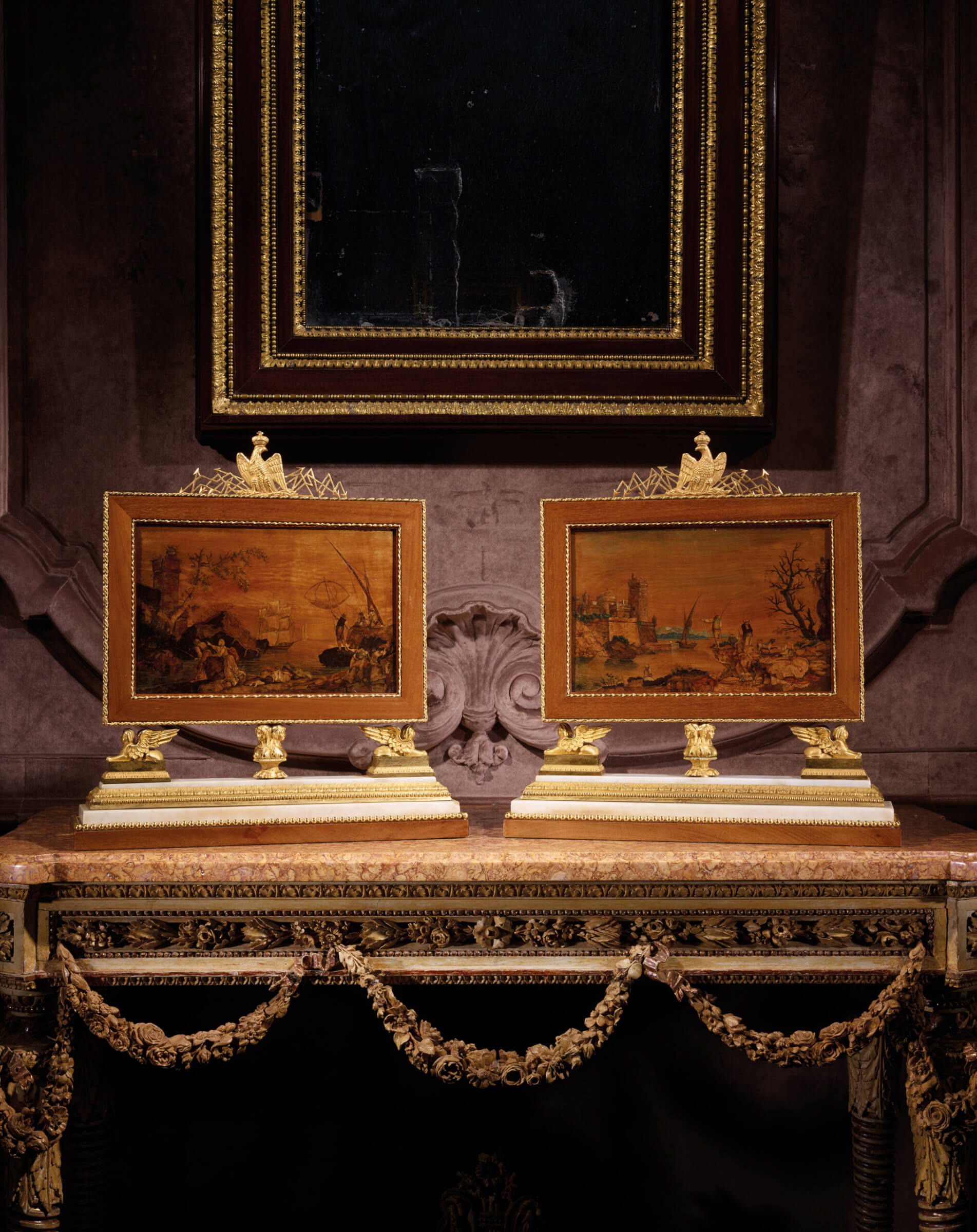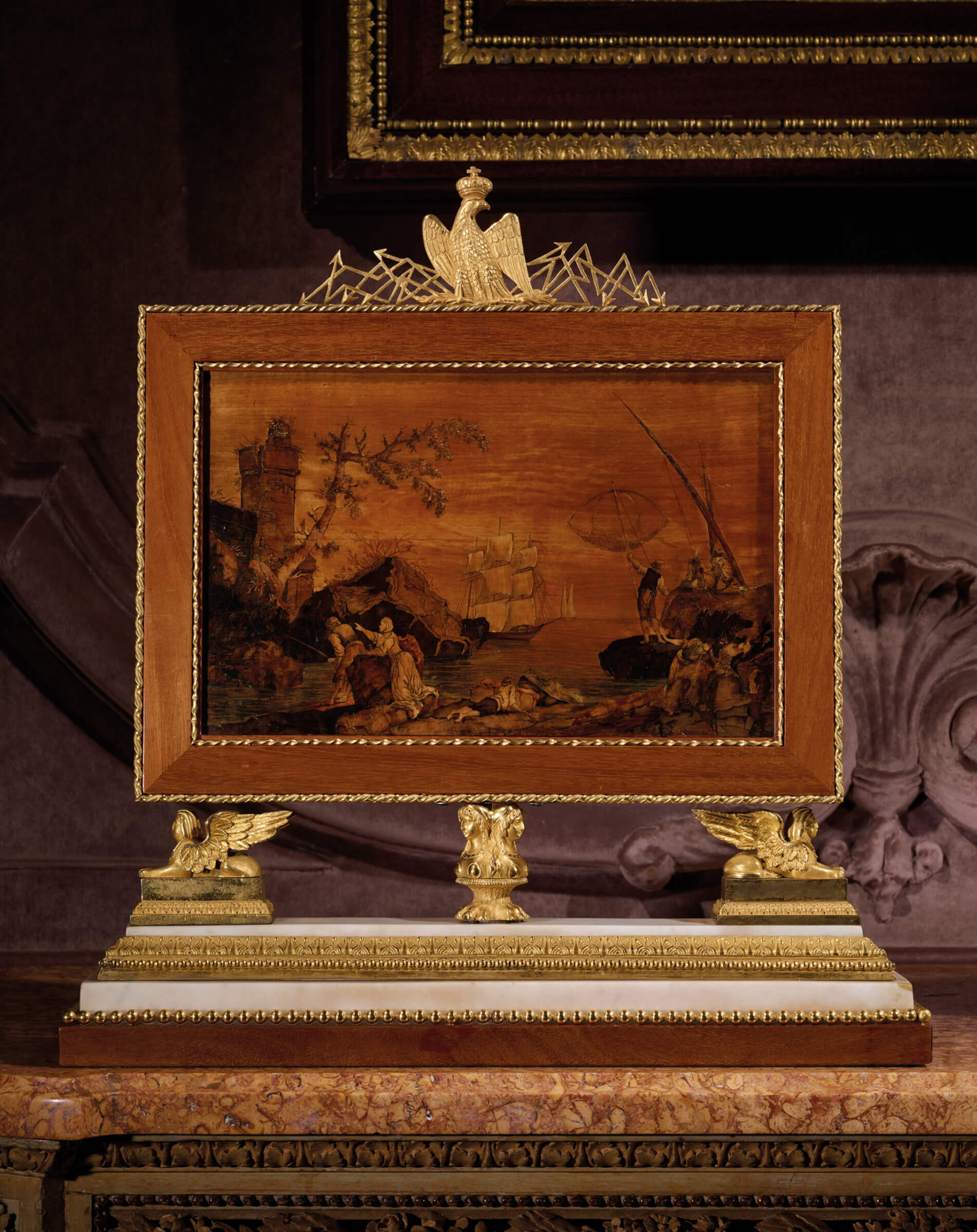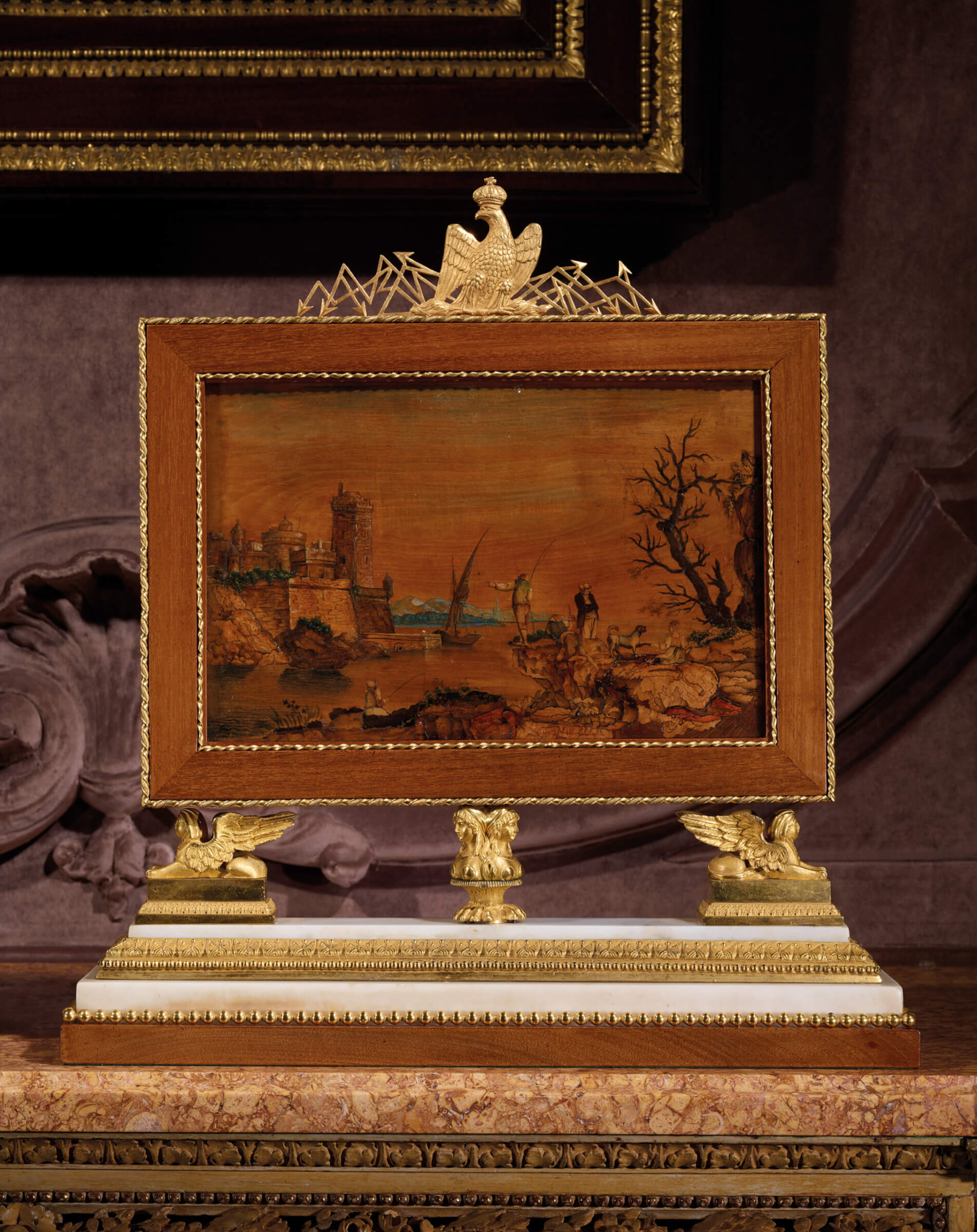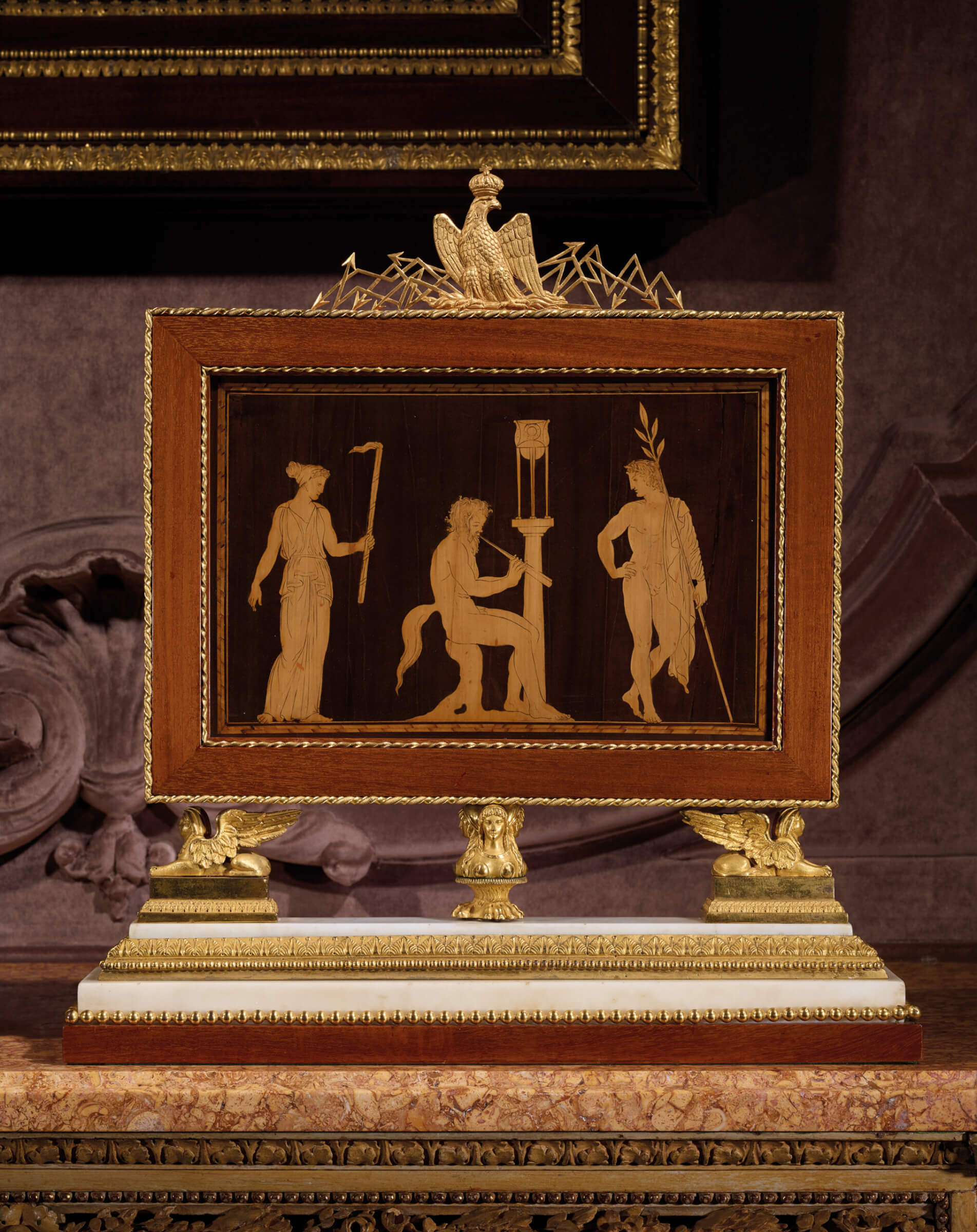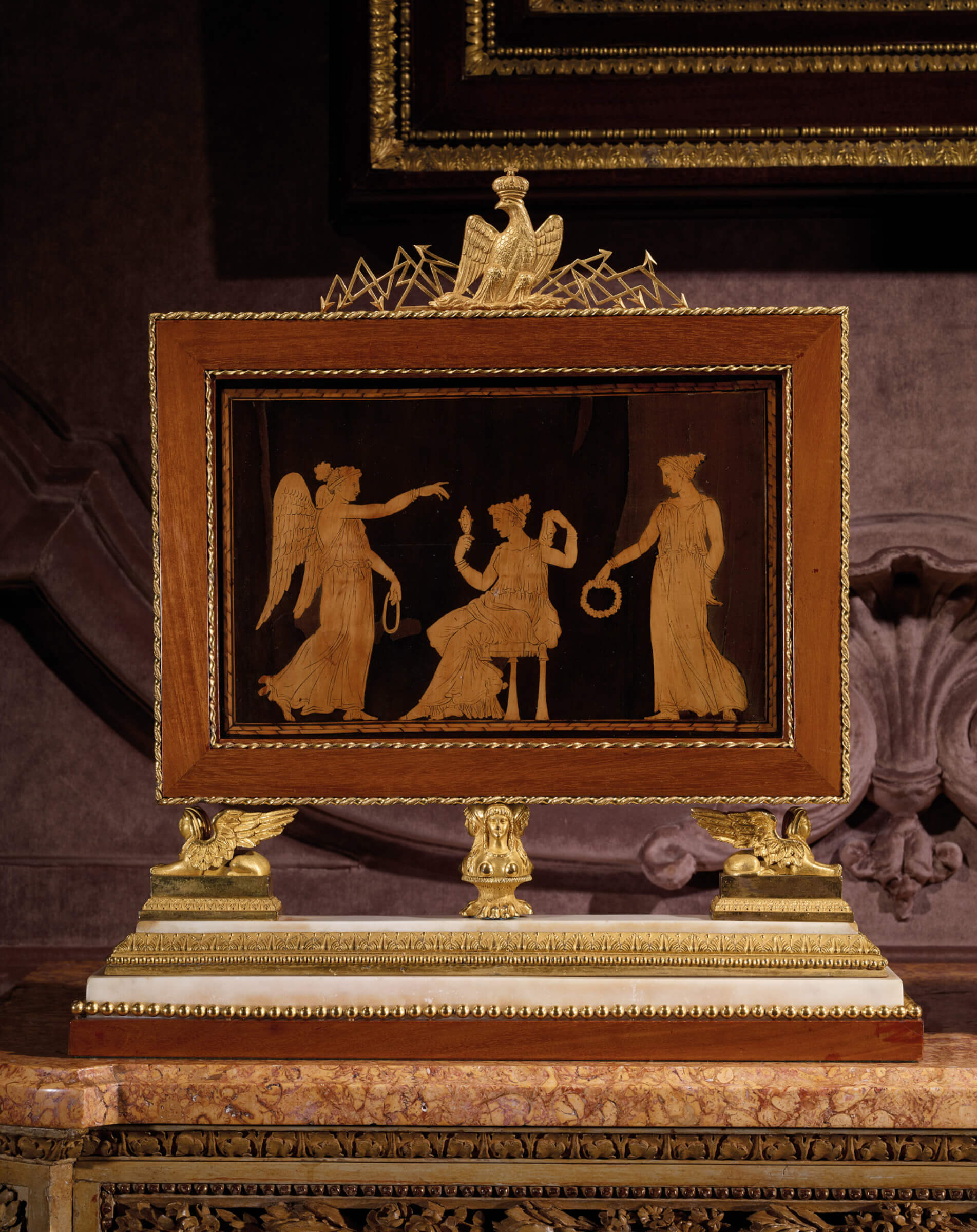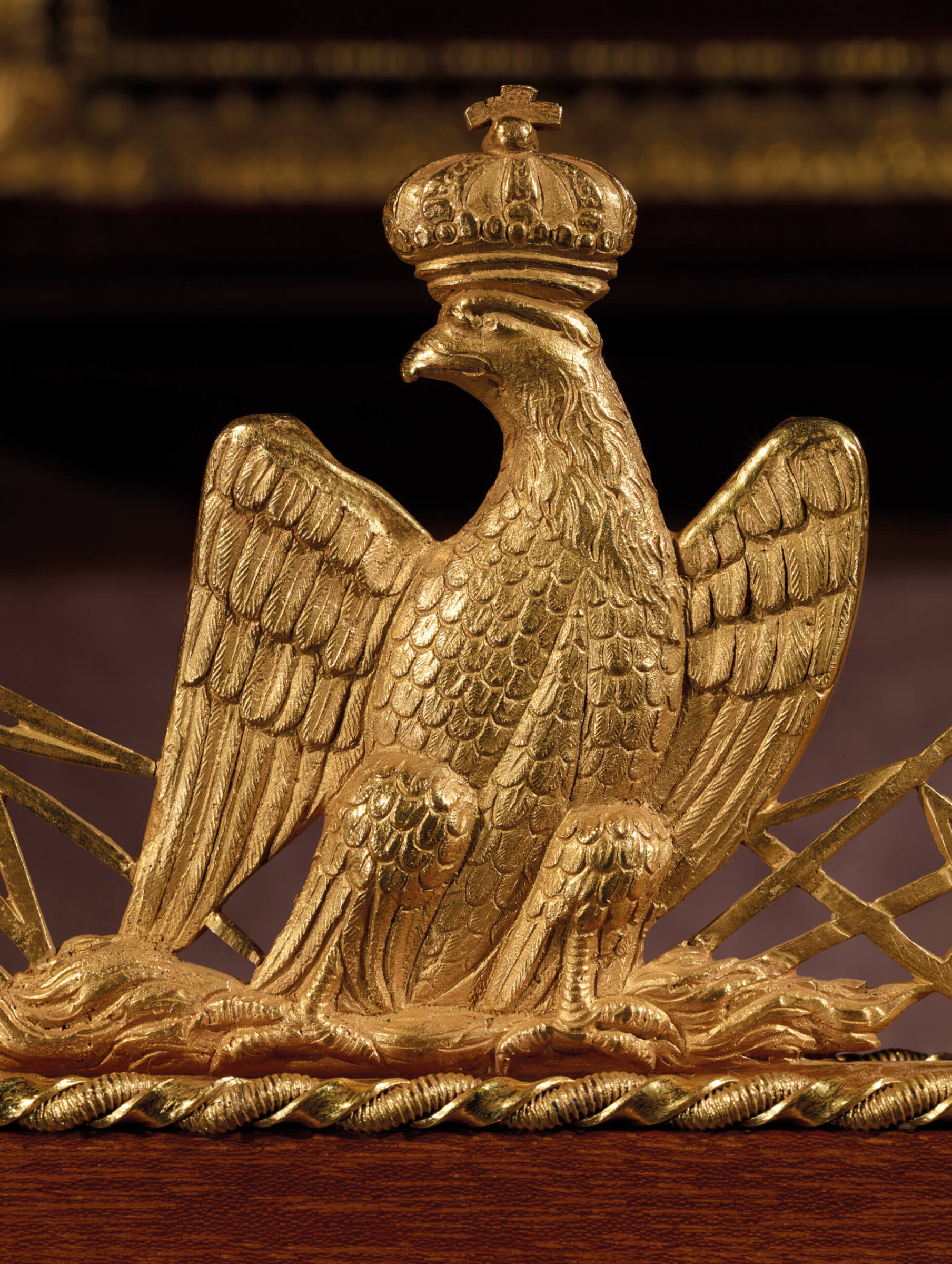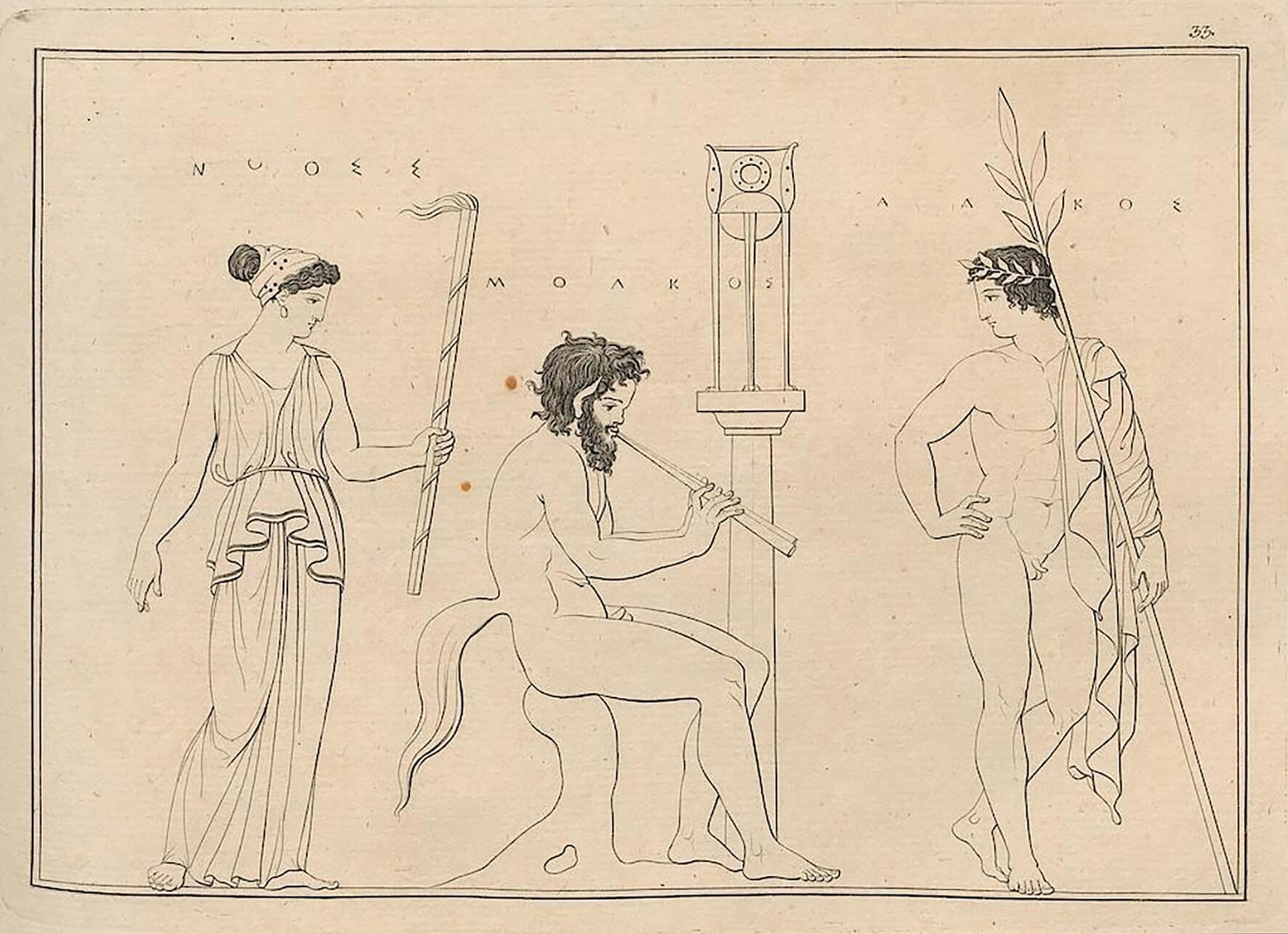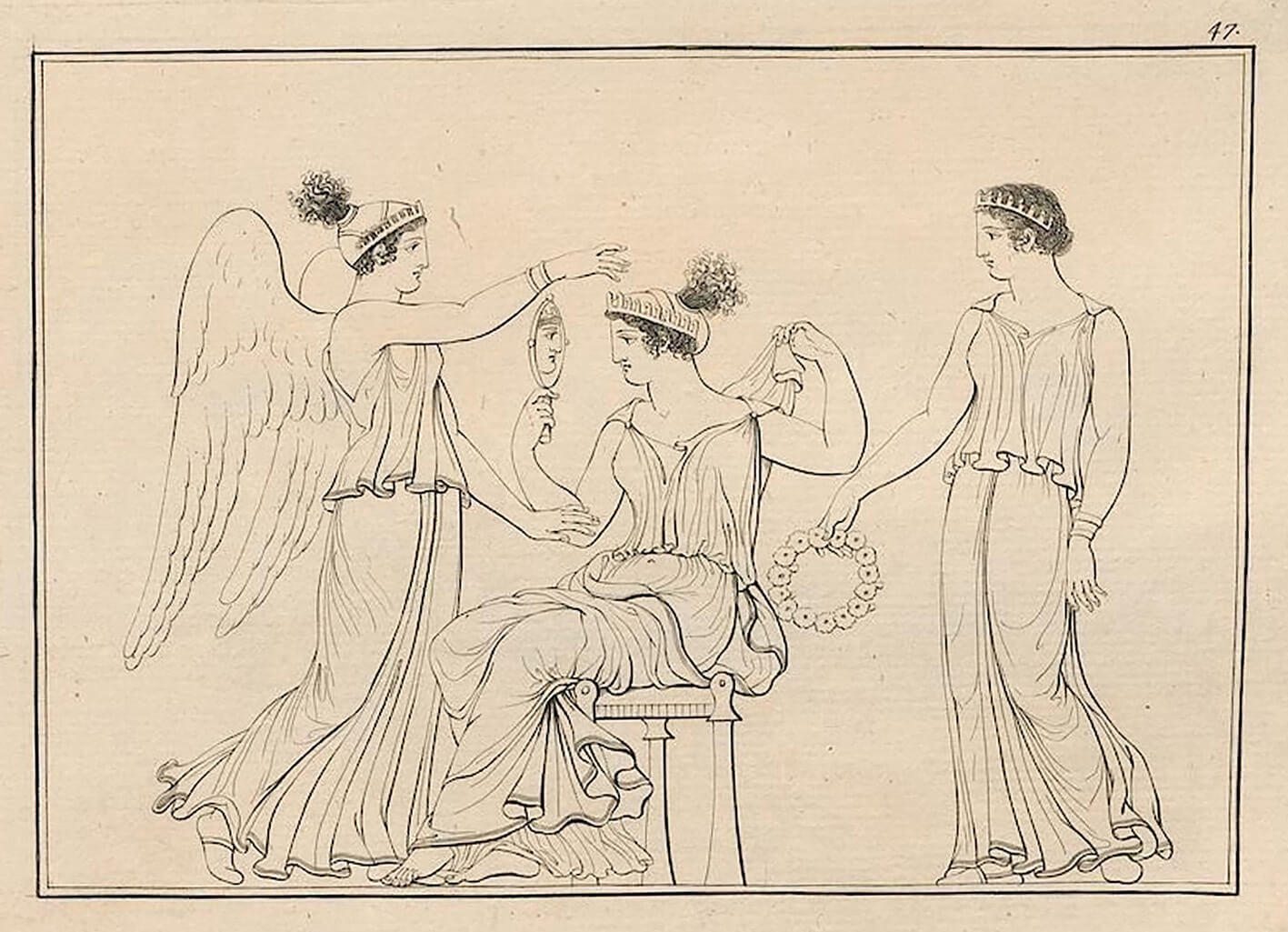

Solid mahogany and mahogany veneer, polychrome wood marquetry with oil painting embellishments; gilt bronze; white Carrara marble.
H. 49.5 cm. (19 ½ in.); W. 46.5 cm. (18 3/8 in.); D. 11 cm. (4 3/8 in.).
PROVENANCE: most certainly executed in Milan between 1805 and 1814 on behalf of Eugène de Beauharnais (1781-1824), son of Empress Joséphine (1763-1814), appointed Viceroy of Italy by Napoleon I, a position he held from 7th July 1805 to 20th April 1814; collection of Carlos de Beistegui (1895-1970), in the grand salon of his townhouse, known as the Hôtel Beistegui, located at 19 rue de Constantine, in the 7th arrondissement in Paris; then by descent, the collection of his nephew Juan de Beistegui (1930-2017), known as “Johnny”, in the “yellow salon” of the Château of Groussay, in Montfort-l’Amaury (Yvelines); auction of the collections of the Château of Groussay, by Poulain—Le Fur, 2nd June 1999, lot no. 281; acquired by the Pelham galleries, London; private American collection.
STATE OF CONSERVATION: all the marquetry panels, gilded bronzes, as well as the marble elements, despite showing some signs of wear over time, have remained in their original state.
A masterpiece of the art of polychrome wood marquetry in Milan under the Empire, this pair of inlaid paintings crowned with the French imperial eagle in gilt bronze surrounded by thunderbolts is unquestionably reminiscent, at least as regards the marquetry, of the work of Giovanni Maffezzoli (Cremona, 1774-1818), one of the most illustrious pupils of Giuseppe Maggiolini (1738-1814), who was appointed viceroy of Italy by Napoleon I on June 7, 1805.; It is possible that these works were designed by Andrea Appiani (1754-1817), who also was appointed painter to the King of Italy by Napoleon I, likewise on 7th June 1805, and who was the author of numerous drawings and projects for furniture and objects, which were actually used by Maggiolini and his pupils to adorn the Royal Palace of Milan, the Villa Belgiojoso-Bonaparte, also known as the Villa Reale, Via Palestro, Milan, and the Villa Reale of Monza, the official residences of Eugène de Beauharnais in Italy.
Rectangular in shape, each picture presents on its two main sides a remarkable inlaid decoration that displays, on one side, a figured scene of an antique vase from the second collection of Etruscan, Greek and Roman vases by Sir William Hamilton (1730-1803). On the back of these scenes, two marine views can be seen, in polychrome wooden marquetry enhanced with oil painting, evidencing a magnificent quality of execution and depicting, with refined detail, fishermen accompanied by their families in steep landscapes of sea bays near harbour fortifications and boats of different sizes at anchor or sailing in the offing.
Ill. 1 – Johann Heinrich Wilhelm Tischbein (1751-1829), plate 33 of the collection Collection of Engravings from Ancient Vases mostly of pure Greek Workmanship discovered in sepulcres in the Kingdom of the Two Sicilies but chiefly in the neighbourhood of Neaples during the course of the years MDCCLXXXIX and MDCCLXXXX now in the possession of Sir Wm. Hamilton […], Naples, 1791.
Ill. 2 – Johann Heinrich Wilhelm Tischbein (1751-1829), plate 47 of the collection Collection of Engravings from Ancient Vases mostly of pure Greek Workmanship discovered in sepulcres in the Kingdom of the Two Sicilies but chiefly in the neighbourhood of Neaples during the course of the years MDCCLXXXIX and MDCCLXXXX now in the possession of Sir Wm. Hamilton […], Naples, 1791.
